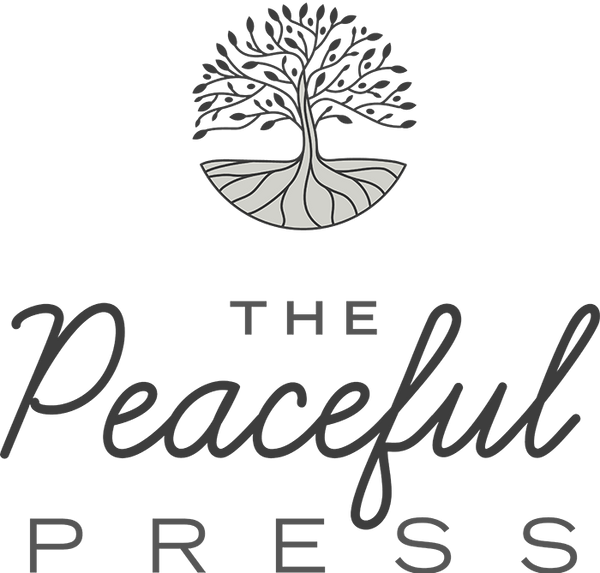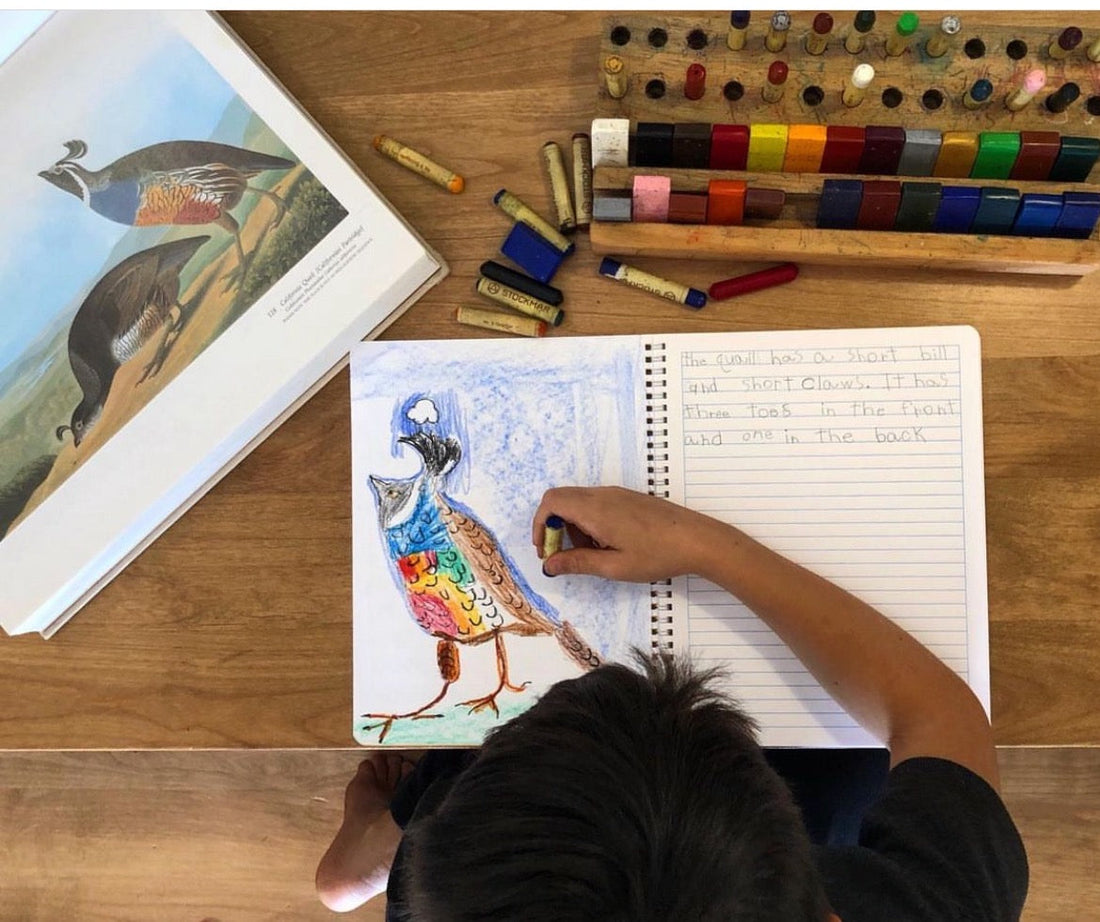Homeschooling with notebooks is a wonderful way to help children develop interests, make observations, and acquire knowledge.
It's been used throughout the ages by such notables as Leonardo Da Vinci, Meriwether Lewis, and Isaac Newton.
And this video by John Muir Laws shows some beautiful examples of his journals, along with some tips for faster sketching.
It can be tempting for homeschool families to skip notebooking in favor of workbooks. We want quick results, and proof of work that comes with neatly filled in blanks might feel easier than asking a child to record their own thoughts in a notebook.
But our aim as homeschoolers isn't merely to prove that our children did something, but rather to help them learn to think, and so with the Peaceful Press, notebooking is an integral part of our daily work.

(featured image from Stephanie Frediani. Image above from @juiceboxhomeschool
Your child doesn't need to notebook every single thing you read, or every lesson, but it should become a regular part of the school schedule.
For example, while doing The Playful Pioneers, you might have your child do an oral narration of the Little House reading and then do a notebook page or written narration about Native Americans. This notebook page could be just a few notes about a tribe, where they lived, and what they ate, along with sketches, or it could be a longer narration in the form of a paragraph with one single drawing.
Or they could copy the poem of the week and add a drawing, but just write a sentence about the history lesson.
Younger children might just dictate a few sentences to you, or color a picture. The work can be tailored to your child's age and ability, while giving them tools for learning.
The notebook page doesn't have to be perfect, but making a habit of writing down personal observations and questions will help your children develop thinking skills, refine questions, and open the door for further learning and better organization.
Every Peaceful Press elementary resource includes prompts for notebooking.
Grab your guide and start deeper learning today.
Favorite Notebooking Resources-
The Living Page by Laurie Bestvater
50 Ways to Draw Your One Beautiful, Ordinary LIfe
How to Teach Nature Journaling by John Muir Laws

Homeschool Notebooking Frequently Asked Questions
What is notebooking in homeschooling?
Notebooking is an educational method where children record their learning through written narration, sketches, diagrams, and personal reflections. It serves as a creative, flexible alternative to worksheets and formal testing, allowing students to process, organize, and express what they’ve learned in their own words and style.
Why should I use notebooking instead of workbooks?
Notebooking encourages deeper engagement and ownership of learning. Unlike workbooks, which often focus on rote answers, notebooking requires children to think critically, summarize, and creatively present information, leading to better understanding and retention.
What are the benefits of notebooking?
-
Promotes critical thinking and creativity
-
Encourages independent learning and ownership
-
Adapts to any subject or learning style
-
Creates a tangible record of learning and growth
-
Helps students develop organizational skills.
How often should my child notebook?
Notebooking does not need to happen after every lesson, but making it a regular part of your homeschool routine is recommended. For example, you might have your child notebook after a Peaceful Press read-aloud, science experiment, or history lesson a few times per week.
What does a typical notebook page look like?
A notebook page can include written narrations, lists, diagrams, drawings, copied poems, or even a few dictated sentences for younger children. The format is flexible and can be tailored to your child’s age, ability, and interests.
Can notebooking be used for all subjects?
Yes, notebooking is highly adaptable and can be used for any subject—history, science, literature, Bible study, nature study, and more. It allows children to explore topics in depth and make personal connections to the material.
What if my child doesn’t enjoy writing or drawing?
Notebooking can be adapted to suit different learning styles. Younger children or reluctant writers can dictate their thoughts to a parent, use more illustrations, or even record audio narrations. The focus is on meaningful engagement, not perfection.
How does notebooking fit with the Charlotte Mason method?
Notebooking aligns closely with Charlotte Mason’s philosophy of “knowing and telling.” It encourages children to narrate and reflect on their learning, fostering habits of attention, observation, and thoughtful expression.
Can notebooking be used with multiple ages at once?
Yes, notebooking is ideal for families with children of different ages. Each child can record their learning at their own level, making it easy to study the same topic together while meeting individual needs.
How do I assess learning through notebooking?
Review your child’s notebook periodically to observe their progress, understanding, and creativity. The notebook serves as both a record of learning and a keepsake of your homeschool journey.

We've included links for products we use and love on Amazon. Thanks for supporting our site.

